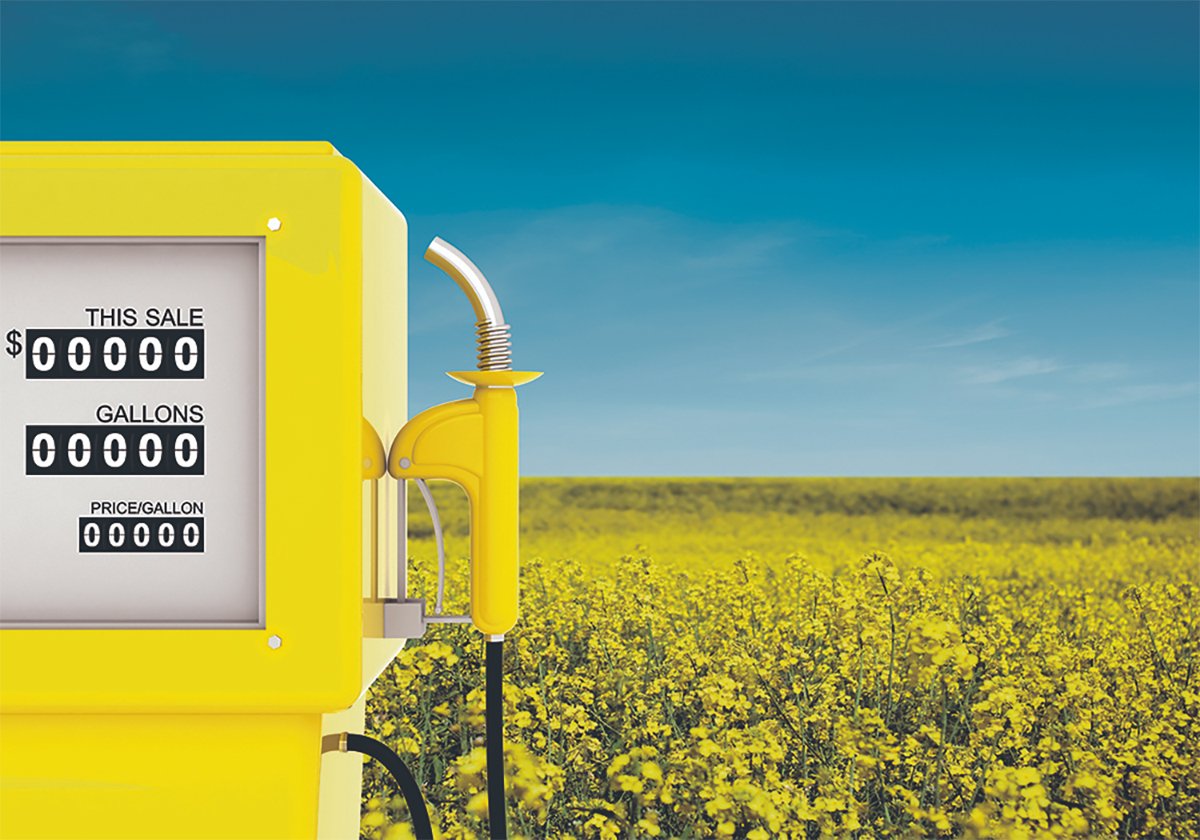Fed cattle steady
The fed cattle market was mostly steady last week as producers sold cattle aggressively to keep inventories current, said Canfax.
The week’s average steer price was $102.05 per hundredweight, down 50 cents from the previous week, while heifers were steady at $101.71.
Alberta prices May 9 and 10 for steers were $97.75-$102.50 per cwt. live and $169-$171.30 on the rail. Heifer prices were $97.75-$102.50 live and $168.05-$170.85 rail.
A large volume of more than 20,000 head traded.
The U.S.-to-Canada cash basis narrowed slightly to $4.45 under.
Read Also

Biofuel sector happy with federal budget
Advanced Biofuels Canada says new Biofuel Production Incentive is a lifeline until CFR amendments are in place.
Age verification premiums dropped to $20 per head from $30 the week before, said Canfax.
Fed cattle exports to May 5 totalled only 10,744 head. Feeder cattle exports exceeded fed cattle exports.
Canfax said last week’s stronger U.S. fed market and the lower Canadian dollar should support the market in the short term.
Fed cattle offerings are expected to grow, but feedlots are current in their marketing and in a good bargaining position.
Beef strengthens
U.S. cutouts rallied last week after three weeks of lower prices, said Canfax. Choice was $161.50 US per cwt., up $5.83 and Select was $148.69, up $4.22.
The Choice-Select spread widened to $12.81.
In Canada, retailers featured hip and chuck cuts instead of the higher priced middle meats. The ongoing labour shortage in packing plants is hurting production.
Large demand for product in Eastern Canada has attracted imports from the U.S., said Canfax.
Canadian cutouts were strong near the end of April with AAA at $192.54 and Select at $186.87. The Calgary wholesale price for delivery this week was steady at $172-$174.
Feeder prices rise
Auction market volumes were light as seeding activity increased. About 27,500 head sold, down 27 percent from the week before and 26 percent lower than last year, said Canfax.
Feeder cattle prices rose with light steer and heifer calves 300-500 pounds steady to $1 per cwt. higher. The only exceptions were light steers 300-400 lb. that fell $3.
Steers and heifers 500-700 lb. were steady to $1 higher and feeders 700-900 lb. and heavier were steady to $1.50 higher.
Limited offerings of butcher cows drove prices higher with D1, 2 cows $1.75 higher and D3 $2.75 higher. Butcher bulls were 50 cents higher.
For the week ending May 5, feeder exports totalled 11,017.
Demand for grass cattle will likely remain good and quality will fetch premiums, said Canfax. Butcher cow prices could continue strong if volumes are limited.
Feeder volumes are expected to decline as seeding takes precedence.
In stock cow trade, bred cows were in demand with most at $850-$1,000 and tops to $1,250 while plain types were $650-$800.
Bred heifers in northern Alberta were steady at $675-$920. Cow-calf pairs traded lower at $1,000-$1,300 with tops to $1,425 and plain types $700-$950.
More cattle on feed
There were 1.02 million cattle on feed in Alberta and Saskatchewan on May 1, up four percent from 2006 and eight percent from 2005.
Looking back to pre-BSE reports, the on-feed number is seven percent larger than 2003, one percent larger than 2002 and down 16 percent from 2001, said Canfax.
After several months of large year-over-year placement increases, April placements were only three percent larger than last year.
Exports from Western Canada in April were down almost 4,400 head from last year at the same time.
Although the placement total was three percent over last year, the weight breakdown was different.
There were 29 percent fewer feeders placed weighing 600 lb., 31 percent fewer in the 600-699 lb. class but 19 percent more in the 700-799 lb. class and 11 percent more in the 800 lb. and heavier class.
Ten percent fewer heifers were placed in April while steers increased by 18 percent.
The total number of fed cattle sold for slaughter in April was 182,487, down nine percent from April 2006. This included domestic slaughter that was unchanged from last year and fed exports down nearly 30 percent.
The Canfax survey group marketed one percent more cattle than in April of last year.
Hog prices dip
U.S. packers trimmed slaughter last week in reaction to tight hog supplies.
Packer margins had been suffering because of the hog shortage and inadequate pork prices. The slaughter slowdown pressured hog prices lower and lifted pork prices.
Iowa-southern Minnesota hogs traded May 11 at $53.50 US per cwt., down from $55 on May 4.
The U.S. composite pork carcass cut-out value was $77.80 May 11, up from $75.34 on May 4.
Federal slaughter in the U.S. last week was estimated at 1.93 million, down from 1.97 million the week before.
Bison report
The Canadian bison report was not available.
The U.S. Department of Agriculture reported May 10 that carcasses from bulls younger than 30 months rose to an average of $183.98 US per cwt. in April, up from $180.68 in March.
Cull cows fell to $113.06 per cwt. from $115.68 the month before.
Sheep prices steady
Beaver Hill Auction in Tofield, Alta., reported 388 sheep and 66 goats traded April 30. Prices were steady considering the quality, and heavier lambs sold at higher prices.
Lambs lighter than 70 lb. were $152-$168 per cwt. Lambs 70 to 85 lb. were $142-$159, 86 to 105 lb. were $136-$150 and 105-119 lb. were $120-$131. Lambs heavier than 120 lb. were $90-$120 per cwt.
Rams were $50-$100 per cwt. and cull ewes $50-$70 per cwt. Bred ewes were $120-$160 per head and families were $140-$250.
Poor and light goats less than 50 lb. were $100-$150 per cwt. Good kid goats were $150-$181 per cwt. Nannies were $60-$100 per cwt. and mature billies were $122.50-$171.
Ontario Stockyards reported 1,268 sheep and lambs and 115 goats traded last week.
Heavy lambs sold $5-$8 per cwt. higher, while other lambs were steady.
Sheep and goats were firm.














